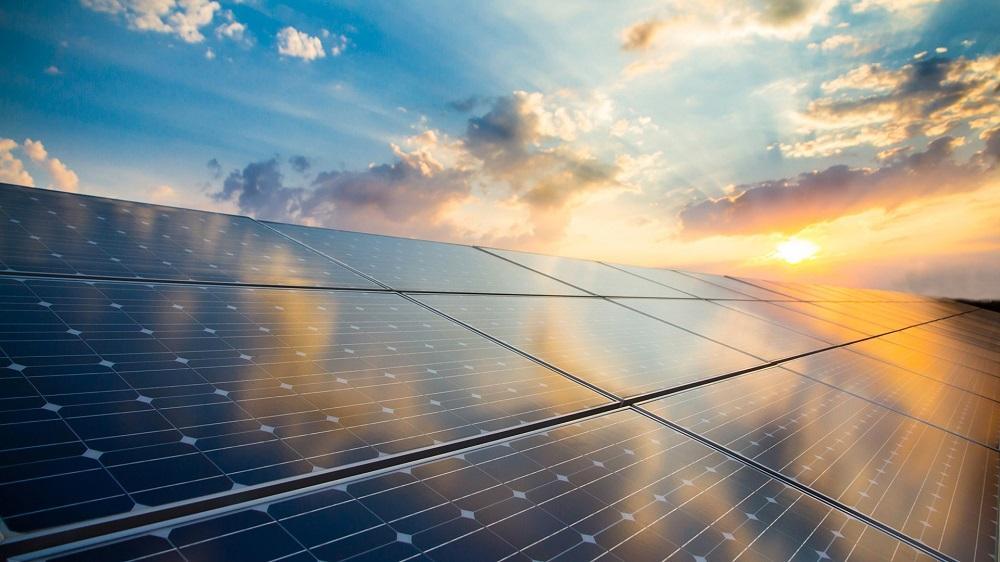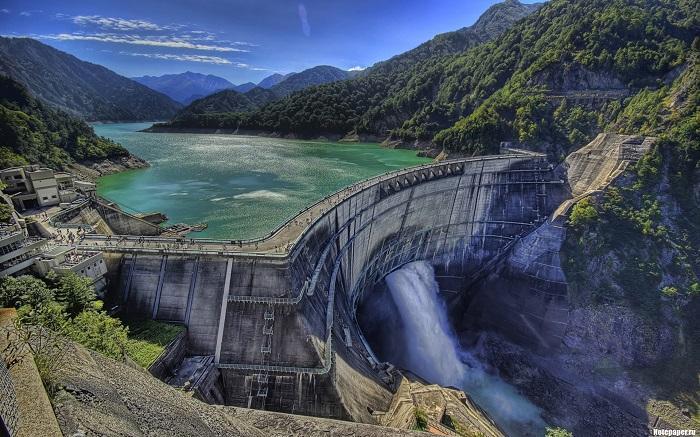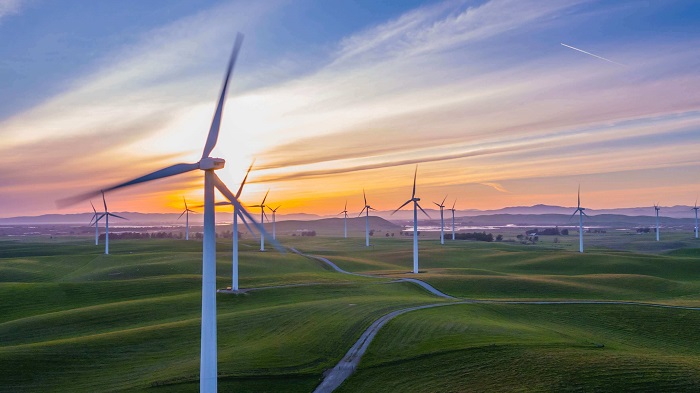With the rapid rate of industrialization, technological advancements and population growth, the importance of energy is at its highest in the modern world. From light bulbs to cars and large factories they all need the energy to operate; thus, our daily lives rely heavily on this source. Energy resources are of two kinds, they are either renewable or non-renewable. Non-renewable energy resources, on the one hand, are these finite sources of energy that once used up it takes millions of years for them to be replenished. Fossil fuels like oil, gas, and coal are the main example of such a limited source of power. Renewable energy resources, on the other hand, are inexhaustible.
Renewable Energy resources are unlimited sources of energy that regenerate themselves through natural processes in a short span of time. As these resources don’t emit carbon dioxide or other greenhouse gasses, they are considered to be clean and environment-friendly. In this era of global warming and other environmental issues exasperated by the emissions from fossil fuels, these infinite and clean sources of energy are the best choice that we have. Hydropower, tidal, tidal, nuclear, Biofuel, wind, solar, biomass, and geothermal are different types of renewable energy. Linquip has gathered all the information you need on these different types of renewable energy. So, read on!
What Are the Different Types of Renewable Energy?
- Hydropower
- Solar
- Tidal
- Nuclear energy
- Hydrogen
- Wind
- Biomass
- Geothermal
Hydropower
One of the popular types of renewable energy is hydropower that is derived from the kinetic energy of the river currents. This technique is nothing new; in ancient times waterwheels were used to convert the kinetic energy of water into the mechanical power needed to operate different tasks in a watermill.
Today, this energy is captured and transformed into electricity using more complex systems that typically rely on dams and turbines. In this method, water is stored behind dams that are built across rivers; once that water is released to the downstream, turbines and generators convert its kinetic energy to electric power. The amount of water that passes through this conventional hydroelectric plant and the height from which it falls, determines the amount of the electricity that is produced. In other kinds of such plants, dams are omitted and the flow is channelized through a waterway instead.
Hydropower is one of the widely-used renewable sources of energy. The global capacity of this source hit a record of 1,308 gigawatts last year.
Solar
Another type of renewable energy comes from the infinite ball of energy that shines in the sky, the sun. The sun’s energy comes from a process of nuclear fusion and it reaches the earth thorough particles of light energy called photons. Photovoltaic (PV) cells of solar panels absorb these small bundles of energy and turn them into electricity.
The more solar panels you have, the more energy you can generate. That’s why solar farms are built. A solar farm is a photovoltaic power station with a vast solar array to generate clean electricity on a large scale.
The amount of photons that reach the earth in one single hour is enough to produce the global energy needs for a year, albeit on paper.
Solar energy is the most copious form of renewable energy in the world. Moreover, solar panels are relatively economic and accessible so everyone can install them and generate the power needed for their house or business in a clean and easy way.
Tidal
This is another form of hydro energy that uses twice-daily tidal currents to drive turbine generators. Although tidal flow unlike some other hydro energy sources isn’t constant, it is highly predictable and can therefore compensate for the periods when the tide current is low. Find out more by visiting our marine energy page.
Tidal and wave energy is still in a developmental phase, but the ocean will always be ruled by the moon’s gravity, which makes harnessing its power an attractive option. Some tidal energy approaches may harm wildlife, such as tidal barrages, which work much like dams and are located in an ocean bay or lagoon. Like tidal power, wave power relies on dam-like structures or ocean floor–anchored devices on or just below the water’s surface.
Nuclear energy
This is taken from the core of an atom, which must be split to gain its energy, a process called fission. This is harnessed in a power plant, where rods of nuclear material adjust how much electricity is produced. The more rods that are present during the chain reaction, the slower and more controlled the reaction will be. Removing the rods will allow a stronger chain reaction and create more electricity. Whether or not nuclear energy should be considered renewable is a constant debate.
Hydrogen
Hydrogen needs to be combined with other elements, such as oxygen to make water as it does not occur naturally as a gas on its own. When hydrogen is separated from another element it can be used for both fuel and electricity. Hydrogen can be used as a clean burning fuel, which leads to less pollution and a cleaner environment. It can also be used for fuel cells which are similar to batteries and can be used for powering an electric motor. Since hydrogen needs energy to be produced, it is inefficient when it comes to preventing pollution.
Wind
The energy generated from the wind is another item on the list of different types of renewable energies. It’s inexhaustible because wind occurs as long as the sun shines in the sky. The driving force behind the wind is the pressure gradient and that’s exactly what happens when the sun heats the surface of the earth unevenly resulting in a difference in air temperature and consequently, pressure.
Wind turbines are used to generate electricity from the kinetic energy of the wind. Here how it all happens: The blades capture the kinetic energy of the wind when it blows past the turbine and converts it into mechanical energy. The rotation of the blades turns the connected shaft and it, in turn, spins a generator to produce electrical energy.
Depending on the size and location of the turbines, wind energy can supply the need for an entire city or town to electricity.
Biomass
Biomass is one of the other types of renewable energy that relies on biological organisms like plants and animals waste to produce energy. Crops, animal remains, living plants, wood, agricultural, industrial, and municipal waste, and even paper are some sources of the biomass energy all of which are replaced in a short span of time.
Biomass fuel sources can either be burned and produce heat directly (like burning wood in a fireplace) or turn into other fuel sources (like ethanol-gasoline or methane gas).
The energy that is released by burning the biomass in combustion systems is used to heat water and buildings, and generate electricity using steam turbines.
Although burning the biomass is not a zero-emission process, comparing to fossil fuels, it releases considerably lower levels of carbon and thus is more environment-friendly.
Biofuels
Biofuels are somewhat similar to biomass, but biofuels use biological matter (animal and plant) to create energy. Biofuel is renewable when plants are used because, of course, plants can always be grown. However, they do require dedicated machinery for extraction, which can indirectly contribute to increased emissions even if biofuels themselves don’t. Biofuels are increasingly being adopted, particularly in the US. According to the United States Department of Agriculture, biofuels accounted for about 7.1 percent of total transport fuel consumption, or 13.8 billion gallons in 2012.
Geothermal
Geothermal energy is one of the other renewable energy resources and the only one that is contained under the surface of the earth. Geothermal energy takes root in the earth’s internal heat and is derived from underground reservoirs of steam and hot water.
By digging deep wells into the layers of earth’s crust, these reservoirs are accessed and the hot water is pumped. Once it reaches the surface of the earth it turns into steam due to the drop in pressure. The collected steam drives a turbine that is connected to a generator and electricity is produced. This is what happens in flash geothermal power plants and is just one of the three techniques employed to tap into the underground source of energy.
Apart from generating electricity, geothermal energy can be directly used to heat and cool buildings or grow plants in greenhouses.
What Role Does Renewable Energy Play in the United States?
Until the mid-1800s, wood was the source of nearly all of the nation’s energy needs for heating, cooking, and lighting. From the late 1800s until today, fossil fuels such as coal, petroleum, and natural gas have been the major sources of energy.
Hydropower and wood were the most used renewable energy resources until the 1990s. Since then, the amounts of U.S. energy consumption from biofuels, geothermal energy, solar energy, and wind energy have increased. Total U.S. renewable energy production and consumption reached record highs in 2020.
In 2020, renewable energy provided about 11.59 quadrillion British thermal units. The electric power sector accounted for about 60% of total U.S. renewable energy consumption in 2020, and about 20% of total U.S. electricity generation was from renewable energy source.
Renewable energy and your home
The advantages of using renewable energy in a domestic setting are persuasive and noticeable. Once you’ve paid for the costs of installing a renewable energy system, you can become less reliant on the National Grid and your energy bills can be reduced. The UK Government’s Feed-in Tariff pays you for the electricity you generate, even if you use it. If you are generating enough energy to export an excess back into the National Grid, you can receive an additional payment from the Feed-in Tariff scheme. Green, renewable sources of energy don’t release carbon dioxide or other harmful pollutants into the atmosphere. According to the Energy Saving Trust’s Solar panels page, a typical solar PV system could save around 1.5 – 2 tonnes of carbon per year. You can find out more in our solar panels guide.
Conclusion
With an environmental catastrophe and a climate crisis looming, there is an urgent need to replace fossil fuels with renewable resources of energy that are clean and inexhaustible. In this article, we introduced solar, hydropower, wind, geothermal, and biomass as the different types of renewable energy. From source and extraction to the application, this is all you needed to know about these resources. If you have any personal experiences regarding the use of these sources of energy, please share it with us. And if you have any questions regarding the different types of renewable energy, the Experts in Linquip are always there to help you. Thanks for reading the piece on the types of renewable energy. Hope you enjoyed it.
Buy Equipment or Ask for a Service
By using Linquip RFQ Service, you can expect to receive quotations from various suppliers across multiple industries and regions.
Click Here to Request a Quotation From Suppliers and Service Providers
Read More on Linquip
- Types of Wind Turbines: The Quick and Easy Intro
- Why Renewable Energy is Important: Find a Web of Significant Reasons
- Is Solar Energy Renewable or Nonrenewable: A Clear Answer
- Advantages of Renewable Energy: A Brief on Some of the Most Undeniable Ones
- Types of Solar Panels: A Simple Guide Assisting You to Have Better Choice
- Types of Solar Energy: Learn the Basics, Get the Most Out of It!
- What Is Solar Farms? All You Need to Know About Solar Parks
- Which Type of Solar Panel Is the Best?
- 10 Main Types of Energy Storage Methods in 2021
- Can renewable energies solve the grave problem of climate change?
- What are the negative aspects of renewable energy?
- What is Distributed Generation? (Clear Guide) + PDF
- Why Is Wind Energy Considered A Renewable Resource?





